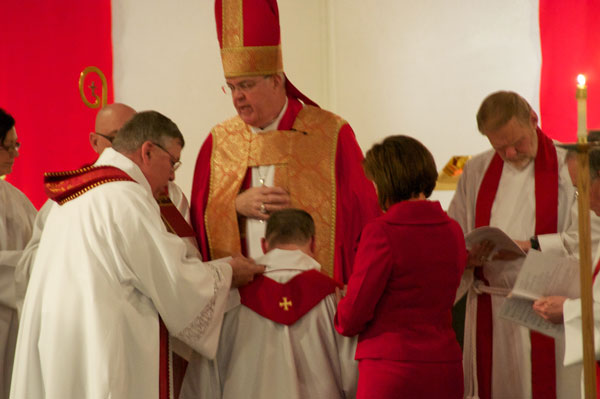Exactly ten years ago, on this day, February 26, 2011, Bishop Robert Alan Rimbo ordained me into the ministry of Word and Sacrament. My wife Carol and my vicarage supervisor, Reverend Ronald M. Klose, then placed a stole across my shoulders. A stole is a long band of fabric worn by clergy as a sign of ordination since the eighth century. In the Lutheran tradition, the stole is only worn by pastors, and it is presented during the ordination rite. It is a symbol of the yoke of obedience to Christ.
For clergy, a stole symbolizes the teaching of Jesus: “Come to me, all you that are weary and are carrying heavy burdens, and I will give you rest. Take my yoke upon you, and learn from me; for I am gentle and humble in heart, and you will find rest for your souls. For my yoke is easy, and my burden is light (Matthew 11:28-30).”
The stole is among the Christian vestments and paraments visible in a worship setting that communicate the liturgical leaders’ role and the setting. Symbolism is a powerful tool for many religions.
The most identifiable symbol in Christianity is the cross. Necklaces adorned with gold or silver crosses are proudly displayed pieces of jewelry commonly found. Although the cross accessory may offer a beautiful display, its symbolism holds a much deeper meaning. Our focus shines brightly on the cross during the current Lenten Season, not the shiny jewelry but on its symbolic meaning.
Join us for worship on the Second Sunday in Lent. The Gospel message, Mark 8:31-38, tells us about that great symbol, “If any want to be my followers, let them deny me and take up their cross and follow me.” We invite you to gather with us this Sunday, February 28, at 9:15 AM (indoors) or 10:30 AM (outdoor drive-in) for our half-hour worship services. I will be taking up my yoke. You can take up your cross. Be part of our symbolic Lenten journey to the cross.

